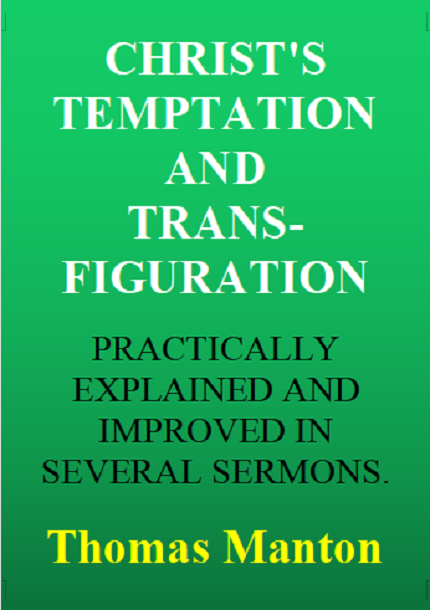By Thamas Manton.

Christ’s Temptation and Transfiguration, practically explained and improved in several sermons.
By Thomas Manton.
About this book:
Christ’s Temptation and Transfiguration” is a book by Thomas Manton that was first published in 1670, several years after his death.
In this book, Manton offers a detailed exposition of two key events in the life of Jesus Christ – his temptation in the wilderness and his transfiguration on the mountain.
The book is divided into two parts, with the first part focusing on Christ’s temptation and the second part on his transfiguration. In each section, Manton examines the biblical narrative in great detail, drawing out practical lessons and applications for Christian living.
In the first part of the book, Manton discusses the various temptations that Jesus faced in the wilderness, as recorded in Matthew 4 and Luke 4. He explores the nature of temptation, the tactics that Satan uses to tempt us, and the ways in which Jesus overcame temptation through his reliance on God’s Word and his obedience to God’s will. Manton also discusses the significance of Christ’s temptation for our own spiritual growth and perseverance in the face of trials and temptations.
In the second part of the book, Manton turns to Christ’s transfiguration, as recorded in Matthew 17, Mark 9, and Luke 9. He examines the meaning and significance of this event, in which Jesus was revealed in his divine glory to his disciples. Manton explores the theological implications of Christ’s transfiguration, including its significance for the doctrine of the Trinity and the nature of Christ’s personhood. He also draws practical lessons from the event, including the importance of faith, the need for spiritual transformation, and the hope of future glory for believers.
Overall, “Christ’s Temptation and Transfiguration” is a rich and thoughtful exposition of two important events in the life of Jesus Christ. It demonstrates Manton’s deep knowledge of the Bible and his ability to apply its teachings to the challenges and struggles of Christian life. The book continues to be widely read and appreciated by Christians today, particularly those in the Reformed tradition.